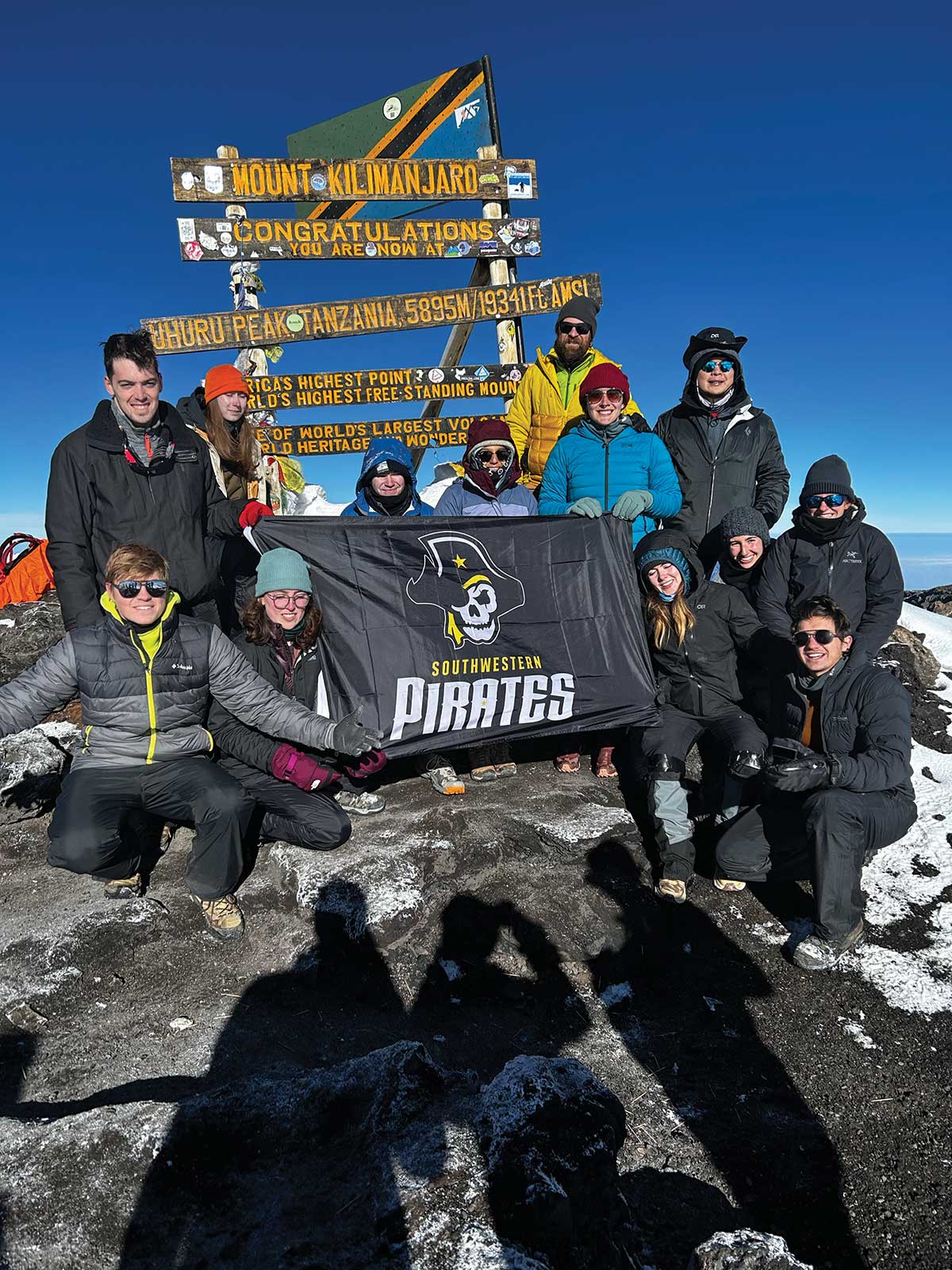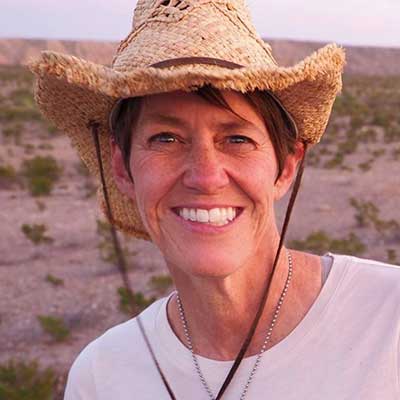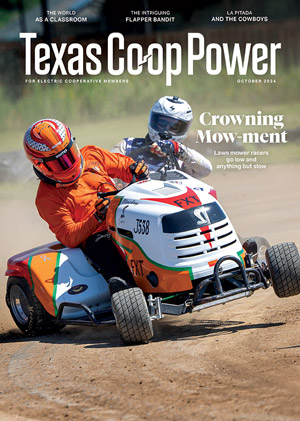Some of the most important lessons of college didn’t come in a classroom for Thira Schlegel. They came during a 10-day trip to Tanzania in January, when the Southwestern University senior and 11 other students climbed to the summit of Mount Kilimanjaro.
During the trip, part of the university’s Outdoor Adventure Program, Schlegel befriended a Tanzanian porter, a young man named Good Luck, who, like her, is an artist. Arriving in camp after difficult days of hiking at high elevations, Schlegel would unpack her art supplies and take in the rugged surroundings.
“I’d find a spot that inspired me and invite Good Luck to join,” Schlegel says. “We painted the same scene together, sometimes in silence and sometimes talking about our lives and how they’re similar and different.”
That experience, Schlegel says, made her realize the privilege she has at home in Texas and inspired a series of paintings that incorporate themes of sustainability and adventure.
It also gave her confidence she’ll carry with her the rest of her life.
Top of the Class
Schlegel and the others’ ascension of Kilimanjaro, which at 19,341 feet is the tallest peak in Africa, was part of a program led by mountaineer Branndon Bargo. He’s Southwestern’s assistant director for outdoor adventure and executive producer and host of The Highpointers, a PBS series about Bargo and his brother, Greg, climbing the highest peaks in all 50 states.
The trip capped a year of shorter excursions that included mountain biking, kayaking, horseback riding and caving—all designed to help students feel more comfortable outdoors, find community and hone their leadership skills along the way.
“We want them to have fun but learn something,” Branndon Bargo says of the extracurricular program, which he hopes will eventually become a for-credit class at the university in Georgetown, north of Austin.
Baylor University, Texas A&M University, the University of Texas at Austin and other campuses also offer various forms of outdoor activities to round out their students’ education.
“It’s a way to retain students,” Bargo says. “During COVID, we learned kids get really stressed out. They need a way to have community and find friends and de-stress. The university realizes this is a way to do that—and get students outdoors. They’re putting an emphasis on it and money toward it.”
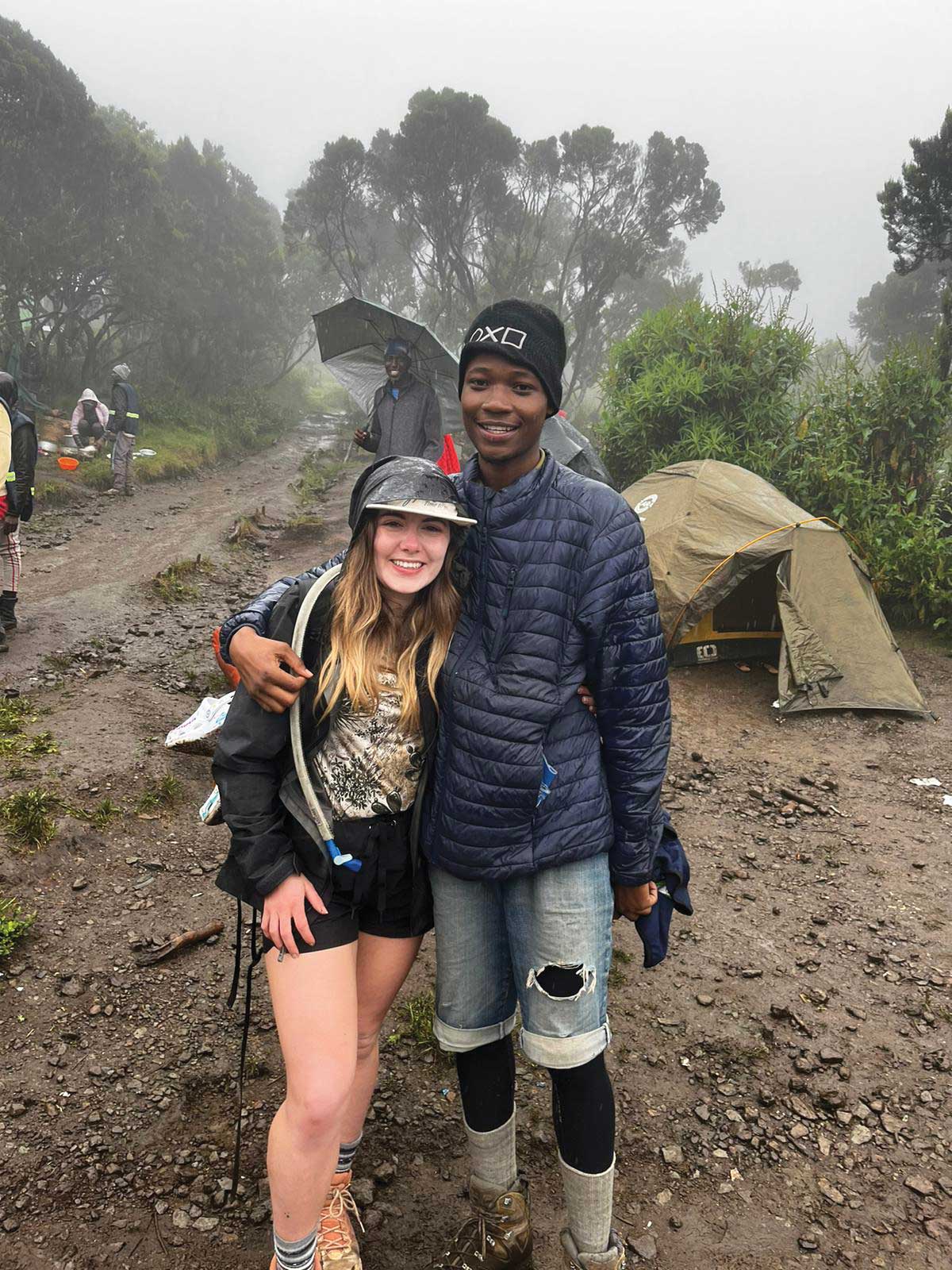
Southwestern University student Thira Schlegel, left, with Good Luck, a Tanzanian porter she befriended on her trip to Africa.
Courtesy Thira Schlegel
Respecting the Unexpected
At Texas Tech University, students in the Adventure Media class, offered in the spring semester, bicycled 100 miles through the rugged canyons and cactus-studded plateaus of West Texas this year, gathering video and photos and collecting scientific data to create a three-part YouTube series about desert botanicals.
Jerod Foster co-teaches the program, created in 2014 and originally geared toward students interested in working in outdoor media. Today it’s offered as an elective to students in all majors, but they must apply and interview for a spot.
“About half the class are folks interested in media production and storytelling, and the other half are folks from engineering, business, arts and humanities who are interested in a unique experience that lets them dive into areas their majors don’t let them focus on,” Foster says.
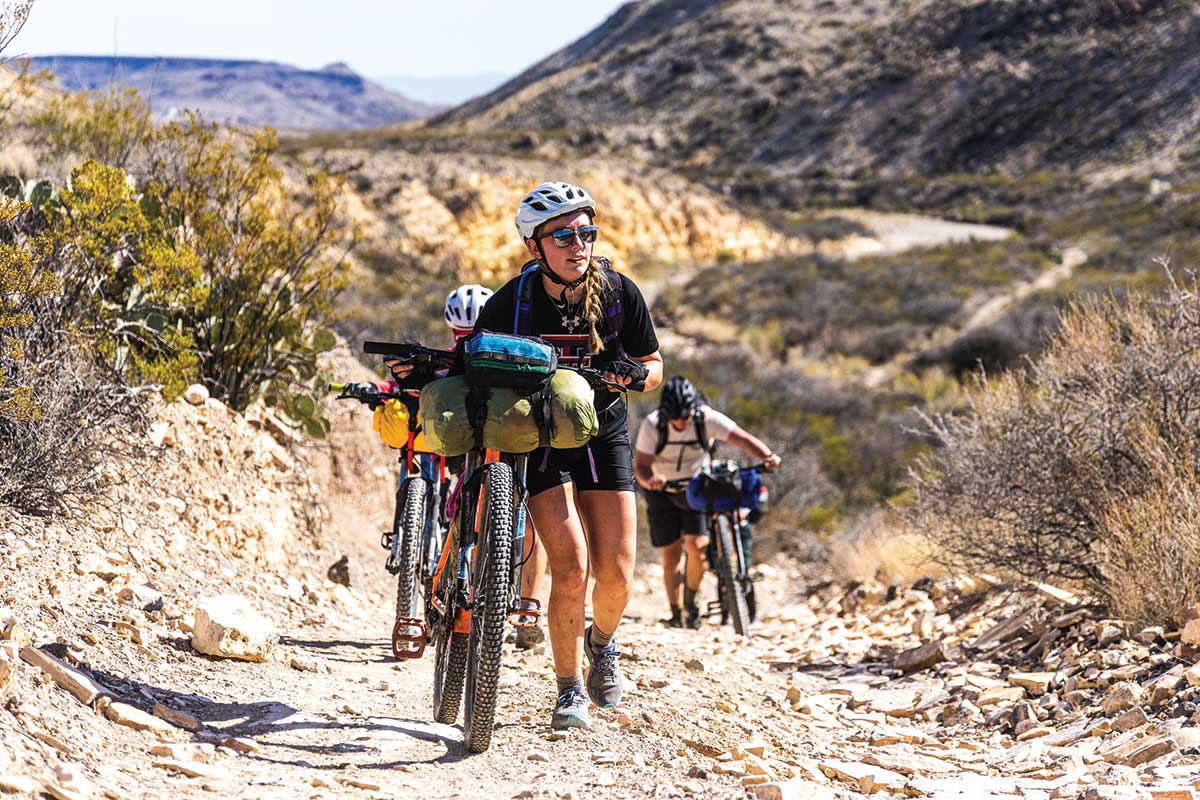
Texas Tech University student Kassidy Edwards hikes her bike out of Fresno Canyon in Big Bend Ranch State Park.
Courtesy Jerod Foster
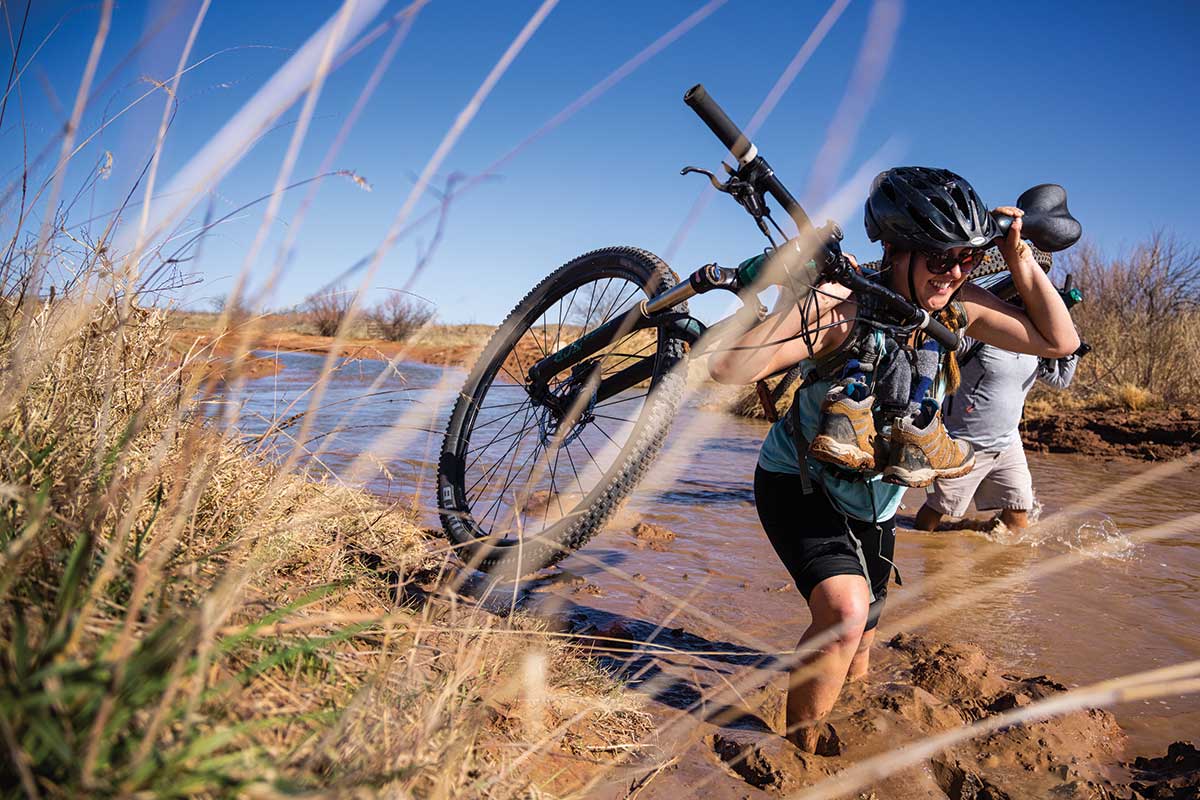
Anna DesHotels, a student in Texas Tech University’s Adventure Media course, sloshes through a muddy stretch of the Brazos River during a training ride.
Courtesy Jerod Foster
The signature experience of each session is a bike backpacking trip during spring break. Last year students biked 150 miles through New Mexico. This year’s class pedaled 100 miles through prickly Big Bend Ranch State Park, along the Rio Grande.
“The primary takeaway is for them to get a very real-world taste of what it’s like to go into the field as a professional and work through an incredibly intense challenge, then get to the other side and produce a quality project,” Foster says. “They grow in confidence and resilience, both physically and mentally. They become a lot more aware of the purpose they are driving themselves toward.”
It’s something that today’s students, whether they realize it or not, are craving, says Foster, who’s also a prolific travel and nature photographer. “They want to be pushed out of their comfort zone. This lets them experience a reality that’s not augmented, and that’s a precious commodity.”
Such programs might look and feel foreign compared to the traditional classroom experience, but—particularly post-pandemic—institutions that are not adopting such immersive, hands-on experiences are getting left behind, Foster says.
“Students learn incredibly well in these settings,” he says. “We need more of these things. They’re not for everybody. We’ve had to deal with concussions and crashes. Some of these students have never ridden a bike before this class, and we don’t go to adventure-light locations.”
But students learn what not to sweat and how to deal with the unexpected.
“They have to be adaptive,” Foster says. “We tell them, ‘This is not going to go the way you imagined it, and that’s OK.’ It makes for great experience.”
And that, perhaps, is the most important lesson of all.
Uphill One Way
At Southwestern, 82 students applied for the Kilimanjaro trip. Bargo whittled it down to a dozen, looking for people interested not only in the physical challenge but those who wanted to learn about other cultures too. It wasn’t easy, but ultimately all 12 students reached the summit.
“We had cold rain every day, even though it wasn’t rainy season,” Bargo says. “They did well as the trip started, but as they passed 14,000 feet, nearly everyone struggled. One of the greatest things was seeing how they rose to the occasion and helped each other.”
The students arrived quiet, nervous and unfamiliar with one another but returned talking and laughing. “It gives them a sense of place and community,” Bargo says. “It helps them learn who they are and builds perseverance and determination.”
For Schlegel, who graduated in May, the adventure marked her first trip overseas.
“I went to Kilimanjaro and saw how big the world truly is,” she says. “It was the hardest thing I’ve ever done.”
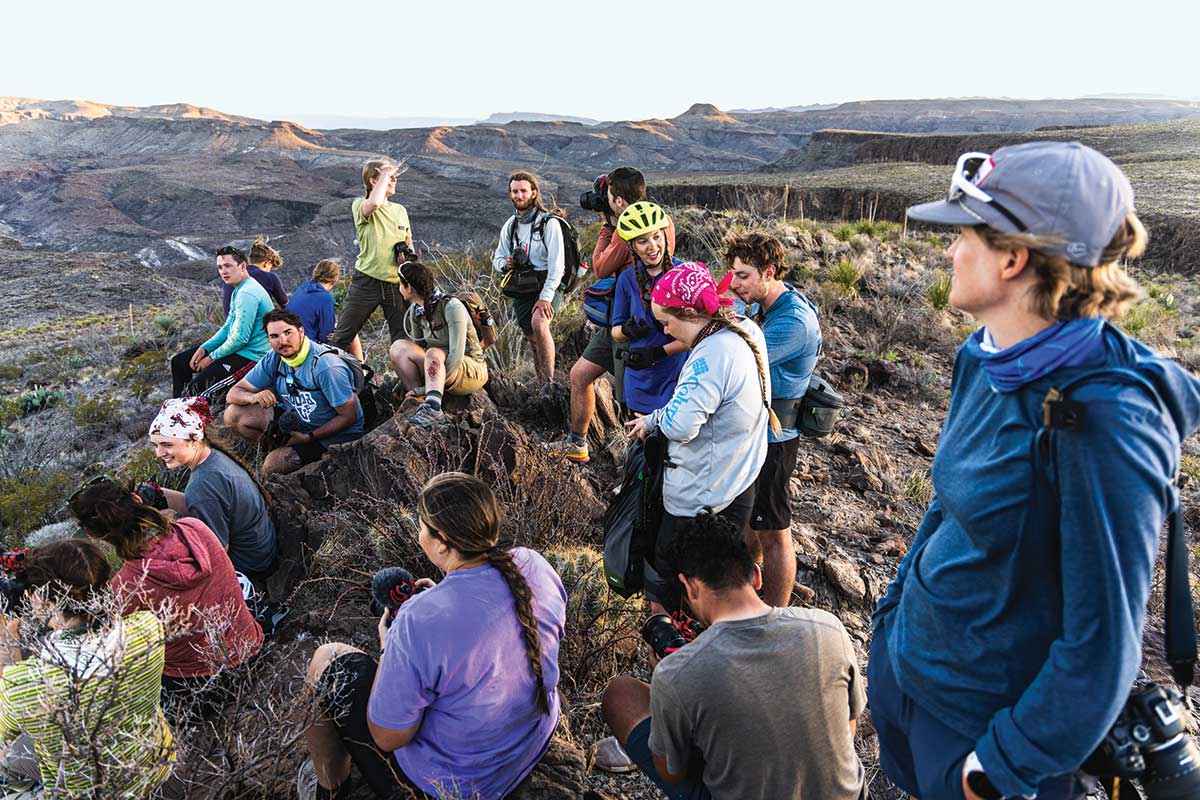
Texas Tech students gather along a ridge overlooking the Madrid Falls watershed in the park.
Courtesy Jerod Foster
But besides instilling confidence, it inspired new themes in her artwork.
“I read about how shoes are such a big contributor to our carbon footprint,” she says. “I got the idea to cut up old running shoes to use the sole and fabric to imprint onto landscape paintings.”
Schlegel gathered pieces of running shoes she found while inching her way up the mountain. The porters often wear shoes given to them by hikers and use them until they fall apart. She dipped those bits of rubber soles—still with dirt on them—into paint and pressed them onto landscapes to imprint a metaphorical carbon footprint onto her paintings.
“It allowed my artwork to carry a totally different meaning, even deeper than it was before,” she says. “I realize we need to sustain the things we have for as long as we can and be grateful for all the gear we use and use it sustainably.”
Schlegel says she hopes to donate proceeds from some of her Kilimanjaro-inspired work to an organization that supports the porters or an elementary school in Africa.
“My mindset has totally changed after this trip. I have this yearning to give back.”
